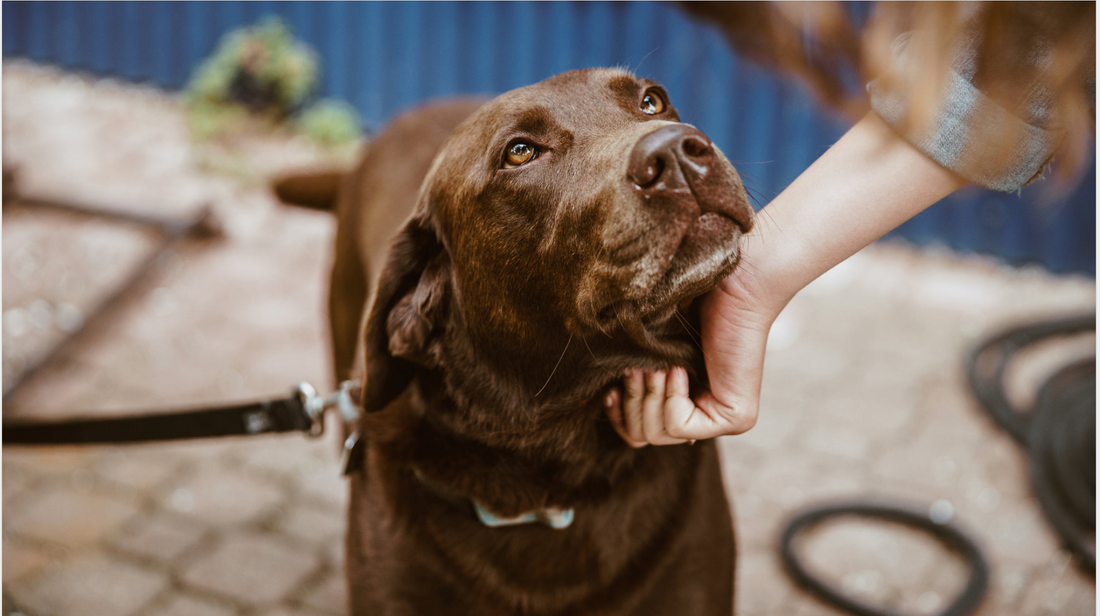
Support Your Fearful Pet: Speak Up & Build Trust | Minet Pet Co
Share
Speak Up for Your Pet: How to Support Fearful Puppies and Kittens
Being a new pet owner isn’t just about cuddles and playtime—it’s also about becoming your puppy or kitten’s biggest advocate. Young pets experience the world for the first time through sound, smell, and unfamiliar situations. It’s completely normal for them to feel scared at times.
🐾 Recognizing Fear in Pets
Fear doesn’t always look dramatic. It can show up in subtle ways:
* Cowering or tail tucked
* Trembling
* Flattened ears
* Hiding or trying to escape
* Whining, growling, or sudden barking
* Refusing to eat or go outside
> “My friend Cassy and I were at the park when a big, excited dog ran up to her little rescue pup, Luna. Luna froze. Her tail was tucked and she looked terrified. Cassy politely asked the other owner to call their dog, but they brushed it off with a laugh. I stepped in and said, ‘She’s still learning to feel safe—please give her some space.’ It was awkward, but necessary. Luna relaxed once we moved away.”
What to do:
Never feel guilty for creating space or setting boundaries for your pet. Politely speak up when others allow their dogs to overwhelm yours. If needed, remove your pet from the situation entirely.
🚪 Fear of Going Outside
It’s incredibly common for puppies—or even kittens learning to leash walk—to be afraid of going outdoors.
Why it happens:
New smells, loud sounds (cars, dogs barking, kids yelling), or past trauma can make stepping outside feel overwhelming.
How to help:
* Start with very short trips—just standing by the door, then one step outside, then back in.
* Use treats as gentle encouragement.
* Stay calm and avoid pulling them along—it builds fear, not confidence.
* Celebrate small wins, even if they only sniff around the doorstep.
Minet Tip:
Try going out at quieter times (early morning or late evening) to reduce sensory overload and allow gradual exposure.
Advocating for Your Pet with Others
Sometimes it’s not the environment—it’s people. A well-meaning friend might try to pet your puppy too quickly, or a neighbor might insist your kitten “just needs to be held more.”
What to say:
* “We’re working on trust right now.”
* “She needs a little space today.”
* “He warms up slowly—we’ll let him come to you.”
Being kind and firm sets the tone and protects your pet’s emotional safety.
🧸 Safe Spaces at Home
Just like people, pets need a place where they feel secure.
Ideas to try:
* A crate or carrier with a cozy Minet Pet Co blanket and toys.
* A quiet corner of the room with no foot traffic.
* A calm scent (like lavender or a pheromone diffuser).
This gives them control over when to retreat and when to engage.
💛 Minet Believes in Gentle Confidence
Helping your pet overcome fear is not about forcing bravery—it’s about creating a safe, supportive world where they learn to feel brave.
With patience, reassurance, and the right tools (like calming toys and confidence-building routines), your new companion will blossom. And when the world gets too big, you’ll be right there—holding space, speaking up, and saying, “It’s okay, I’ve got you.”
Every pet is unique! The advice in this post is meant to guide and support you, but it’s not a substitute for professional help—always consult a qualified veterinarian or certified trainer if you have concerns about your pet’s health or behavior.
